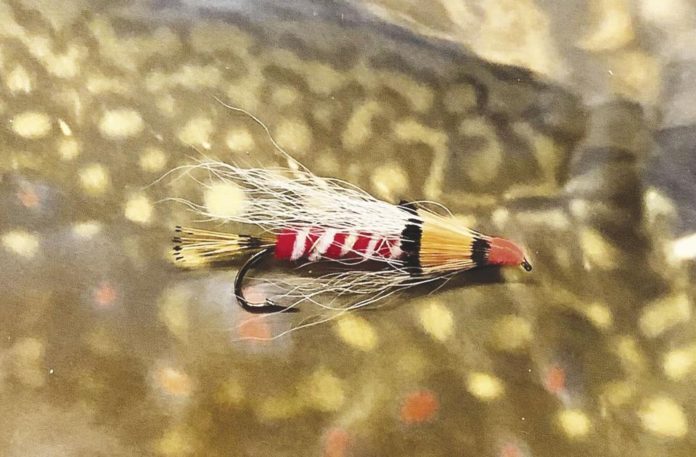Walking out the door one morning this week, the smell of fall was in the air. The sky is bluer. The air crisper. The blue jays flitting. The squirrels scampering. Leaves transitioning from green to yellow, orange, red.
When this feeling enters the angler’s bones, the angler knows that fall fishing is right around the corner. Ponds will cool and trout will once again roam far and wide, having spent the Summer glued to the depths and the cooler water. Rains will raise stream levels and cool the water. Stream trout leave the shelter pools that protected them all summer and begin to move upstream, propagating the next generation on the fish’s mind.
Fly anglers make the transition as well. Waders come out of storage and wet wading socks are put away. Studs are checked on the soles of wading shoes. Repairs are made after a long hard summer of use. Two-weight and three-weight rods are cleaned and stored. Five-weight and six-weight rods are assembled. Dry fly lines are cleaned and stored. Fly reel spools are switched for sinking and sink tip fly lines. Leaders are shortened from 12 feet to 7½ feet. Tippets are upgraded from 6x and 7x nylon to 3x and 4x fluorocarbon.
Spin anglers change focus as well. Trolling lures are polished. Boat rods with lead core line replace downriggers. Screens are cleaned on the boat electronics. Motors are tuned for the hours of low RPM runs. Boat nets are repaired.
The chance for trout anglers to catch a larger than normal fish has returned!
Prior to the spawning season, trout go on a feeding binge. The fish have been stuck in one environment all summer and the food supplies have dwindled. Once the water becomes hospitable, fish range far and wide to put on weight, weight the fish will need to sustain them through spawning season.
Spin anglers will fish with lures that imitate bait fish. DB’s Smelt or a pearl colored Mooseluk Wobbler bring thundering strikes. Once the fish finders have the depths dialed in on the inlet and outlet mouths of streams action can be non-stop.
Fly anglers break out their streamer boxes. Bait fish imitations like the Gray Ghost, Magog Smelt, Black Nose Dace are effective. The large female trout focus on these patterns. They are the ones who will expend energy to build the redds where they deposit the eggs.
The male brook trout focus on the bait fish patterns for a short time before their spawning instinct takes control of their focus. Male brook trout turn a bright, beautiful orange on their belly. Male brown trout turn a buttery yellow. The colors rival anything in nature. Rainbow trout are spring spawning trout.
Once the male trout hormones kick in, food is the furthest thing from the fish’s mind. These trout seek mates and protect the territory that the female has chosen to lay her eggs. Fly anglers transition to bright colored streamers to illicit a strike. And strike the male trout do.
A favorite fly pattern for this type of fishing in the Frances. This pattern is a Bergman creation that never fails for the fall fishing. The Frances has a golden pheasant tippet tail.
The body is white and red chenille that is crisscrossed with gold wire. This step is vital as male brook trout teeth harden during the spawn and these teeth destroy flies. The throat is a blend of white and brown bucktail. The wing is white bucktail. The cheeks are golden pheasant tippets.
The orange highlights of this fly bring smashing strikes from the trout. 3x tippet is not too heavy.
Bring a thermometer fishing. Once waters are in the low 60s, fish activity can be found at any time.
Steve Angers, a native to the Conway area, is the author of the book “Fly Fishing New Hampshire’s Secret Waters” and operates the North Country Angler.
Credit: Source link






























